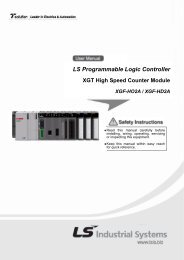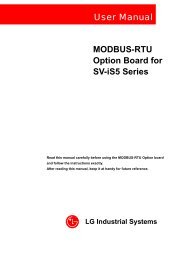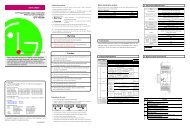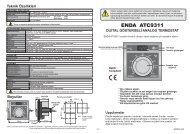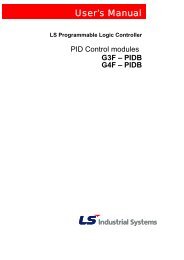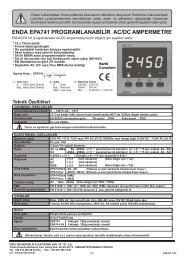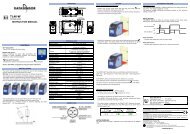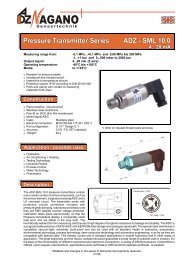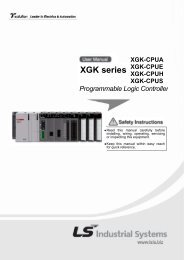user's manual - Ana-Digi Systems
user's manual - Ana-Digi Systems
user's manual - Ana-Digi Systems
Create successful ePaper yourself
Turn your PDF publications into a flip-book with our unique Google optimized e-Paper software.
CHAPTER 9 TROUBLE SHOOTING<br />
CHAPTER 9 TROUBLE SHOOTING<br />
Here describes a variety of error occurring during system operation, the causes, the detection methods and<br />
actions.<br />
9.1 Basic procedure of Trouble shooting<br />
In order to increase the reliability of system, it is important to use the reliable device and at the same time, the<br />
important thing is how fast to take the actions by any ways in case of error occurrence.<br />
The most important thing to operate the system promptly, is to detect the trouble occurrence cause and take<br />
the actions immediately. The basic items to be considered in such trouble shooting are as follows :<br />
1) Checking by the naked eyes<br />
Check the following items by the naked eyes.<br />
• Machinery active state (stop state, active state)<br />
• Power apply state<br />
• I/O device state<br />
• Wiring condition (I/O cable, extended or communication cable)<br />
• After checking the display status of each indicators (RUN LED, READY LED, ERROR LED, STATUS<br />
LED, LINK-IF LED), connect the peripheral device to check the PLC active state or program contents.<br />
2) Trouble detection<br />
Observe how the trouble is changed by the following operation.<br />
• Place the key switch on STOP mode and turn the power ON/OFF.<br />
3) Range limitation<br />
Estimate what is the trouble cause by using the above method among the following causes :<br />
• PLC itself ? Or external cause ?<br />
• I/O section ? Or others ?<br />
• PLC program ?<br />
Here describes the error type or the actions for the detection method and error code, by dividing it per<br />
phenomena.<br />
9-1



